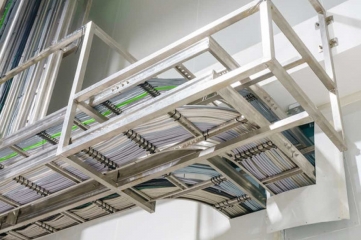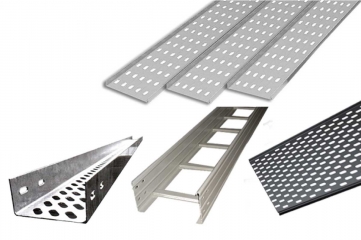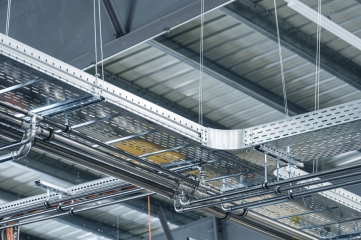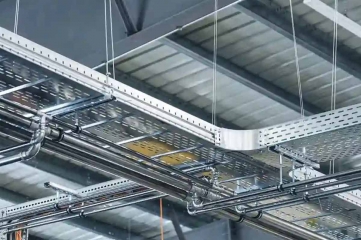In the rapidly growing electrical and industrial sectors, cable management for safety, performance, and scalability is of paramount importance. Given the increasing complexity of commercial and industrial projects, a viable cable management solution is a necessity, not an option. This is where Cable Trays come in to provide engineers and contractors with a basis for the efficient distribution of power and data.
Safety and Efficiency
Cable management is directly linked to ensuring electrical safety. Wires left untended or arranged awkwardly create short circuit and fire hazards while making maintenance difficult. Such structured systems provide a clearly observable and easily accessible means for wire routing, which allows for monitoring, repair, or replacement when required, thereby eliminating accidental damage and system downtime, especially in quickly evolving environments like factories, data centers, and commercial buildings. In addition to safety support, organized routing minimizes signal interference and maximizes cable ventilation, keeping it cooler. When the electrical systems are operationally maintained and serviced, it ensures a longer life for the equipment connected to them, which in turn leads to lower operating costs.
The Role of Ladder Trays
Of the various supports used, Ladder Cable Trays are arguably the best in terms of durability and heavy duty applications. The open design allows excellent airflow, making them great for high power cable routing that requires constant cooling. Such applications include installations inside a plant and in industries where long cable runs and high current carrying capabilities are needed. Then comes simplicity of installation and access. The ladder style rungs allow technicians to easily tie cables and make changes without disruption to other sections. Their heavy duty construction allows them to support large wiring bundles without sagging or warping over time. In an environment where reliability and performance are most important such ladder systems serve as a sturdy option.
Galvanized Solutions for Tough Environments
In tough operating environment such as coastal installations, chemical plants, or outdoor use corrosion resistance tops the priority list. Galvanized Cable Trays from Super Cable Tray Pvt. Ltd. are coated with layer of protective zinc that barishes moisture and chemicals from attacking the metal, promoting their use even in the harshest condition. They are further engineered for extended service life and reduced maintenance in aggressive climates. The protective layer assists in the preservation of structural integrity and ensures another layer of safety by slowing the corrosion of the cable support system. Owing to high demand for infrastructure that is robust and weatherproof interest is growing in the use of galvanized systems which ensure durability over the long term and resilience to adverse environments.
Design Scalability and Flexibility
The ever increasing flexibility of structured cable management systems was one of the reasons for its eventual acceptance in modern infrastructure. It is quite common for an organization that has grown to either add new wiring or reroute existing wiring. A modular system for holding cables for support allows expansion in the future without destroying walls or disturbing already existing implementations. Flexibility can save costs in the long term as companies modify their systems without completely upgrading their designs. New data floors, extended production lines, or even extra office space will ensure that a scalable cable system keeps all of a facility's electrical backbones ready for the future.
Industry Applications and Growing Demand
Healthcare and IT, energy and transportation—the demand for orderly organized cable systems seems to cut across industries. They carry fast data in the data centers with minimum interruptions. In commercial premises, they preserve aesthetics whilst adhering to stringent safety standards. Engineered supports minimize wear and damage caused by constant motion even in high vibration environments such as ships or railways. As regulations become stricter and cabling volumes keep increasing across infrastructure, structured management system solutions provide a simplistic yet very effective means of compliance and reliability. Consequently, their ever increasing incorporation into both construction and renovation projects reflects an industry wide change towards more rational and forward looking planning.
Where Structure Meets Safety: A Glimpse into the Future of Power Distribution
An efficient electrical infrastructure is not just about the wiring quality—it is everything about how it is supported, routed, and protected. Options like Ladder Cable Trays giving strength and airflow, coupled with Galvanized Cable Tray systems that provide assured longevity, contribute to equipment that creates safe adaptable and efficient systems. The need for structured support systems will further increase as industries change; in turn, this will lay the groundwork for intelligent and safe power distribution.



















